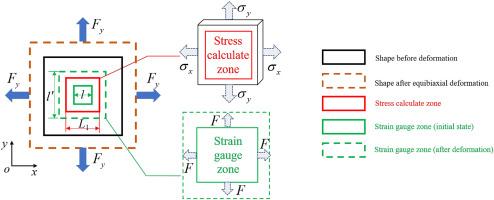How to effectively perform equibiaxial tension for rubber materials?
IF 4.1
2区 化学
Q2 POLYMER SCIENCE
引用次数: 0
Abstract
The utilization of a reasonable rubber hyperelastic constitutive model (HCM) is fundamental to obtain high-precision simulation results for the reliability analysis and structural optimization of rubber products under complex working conditions. Equibiaxial tension (ET) is of importance for the material parameters identification of HCMs. To date, there is no ISO standard for ET test of rubber, nor is there a comprehensive account of the design of different ET testing methods. In this work, we focus on the fundamental challenges of ET, including (i) how to select the appropriate shape and size of rubber samples (square, cruciform-Ⅰ, cruciform-II and circular)? (ii) How to determine the reasonable strain gauge zone through optical extensometers or digital image correlation technique? (iii) How to determine the load-bearing area in the solution of nominal stress? The rationality of the uniform equibiaxial strain calibration area and the precise stress calibration area of square and circular shape samples were verified through experimental data of different rubber materials. This work could provide a theoretical support for the selection and optimization of ET testing methods for rubber materials.


如何有效地对橡胶材料进行等轴拉伸?
本文章由计算机程序翻译,如有差异,请以英文原文为准。
求助全文
约1分钟内获得全文
求助全文
来源期刊

Polymer
化学-高分子科学
CiteScore
7.90
自引率
8.70%
发文量
959
审稿时长
32 days
期刊介绍:
Polymer is an interdisciplinary journal dedicated to publishing innovative and significant advances in Polymer Physics, Chemistry and Technology. We welcome submissions on polymer hybrids, nanocomposites, characterisation and self-assembly. Polymer also publishes work on the technological application of polymers in energy and optoelectronics.
The main scope is covered but not limited to the following core areas:
Polymer Materials
Nanocomposites and hybrid nanomaterials
Polymer blends, films, fibres, networks and porous materials
Physical Characterization
Characterisation, modelling and simulation* of molecular and materials properties in bulk, solution, and thin films
Polymer Engineering
Advanced multiscale processing methods
Polymer Synthesis, Modification and Self-assembly
Including designer polymer architectures, mechanisms and kinetics, and supramolecular polymerization
Technological Applications
Polymers for energy generation and storage
Polymer membranes for separation technology
Polymers for opto- and microelectronics.
 求助内容:
求助内容: 应助结果提醒方式:
应助结果提醒方式:


